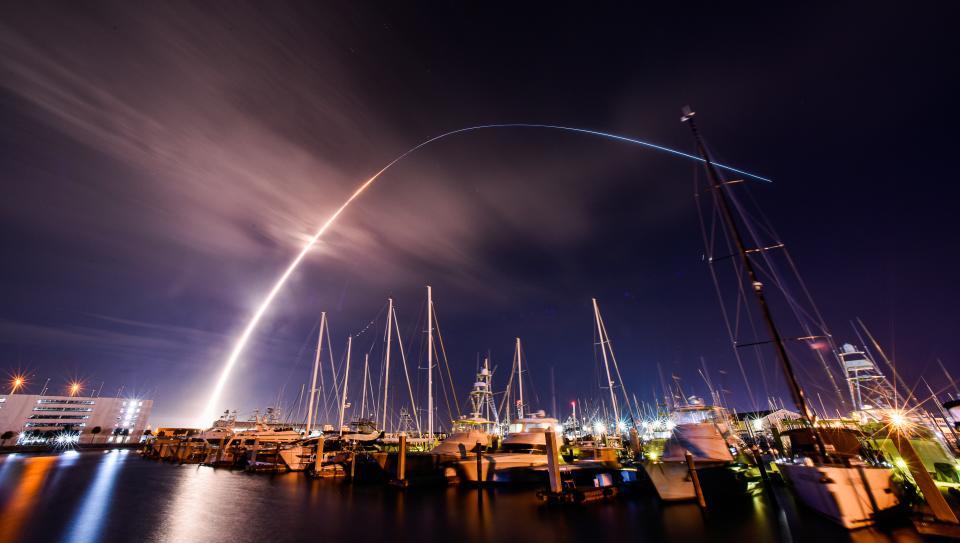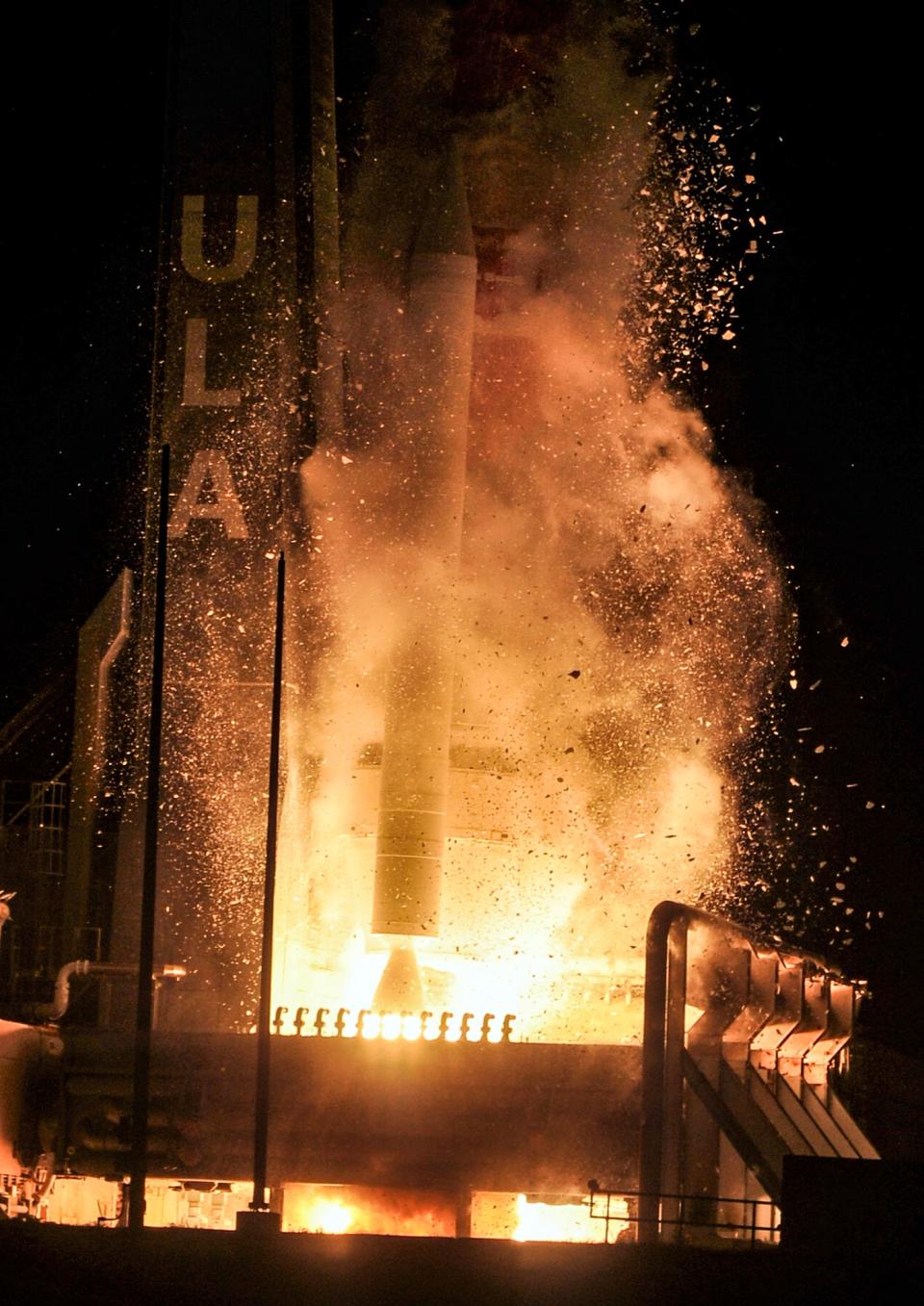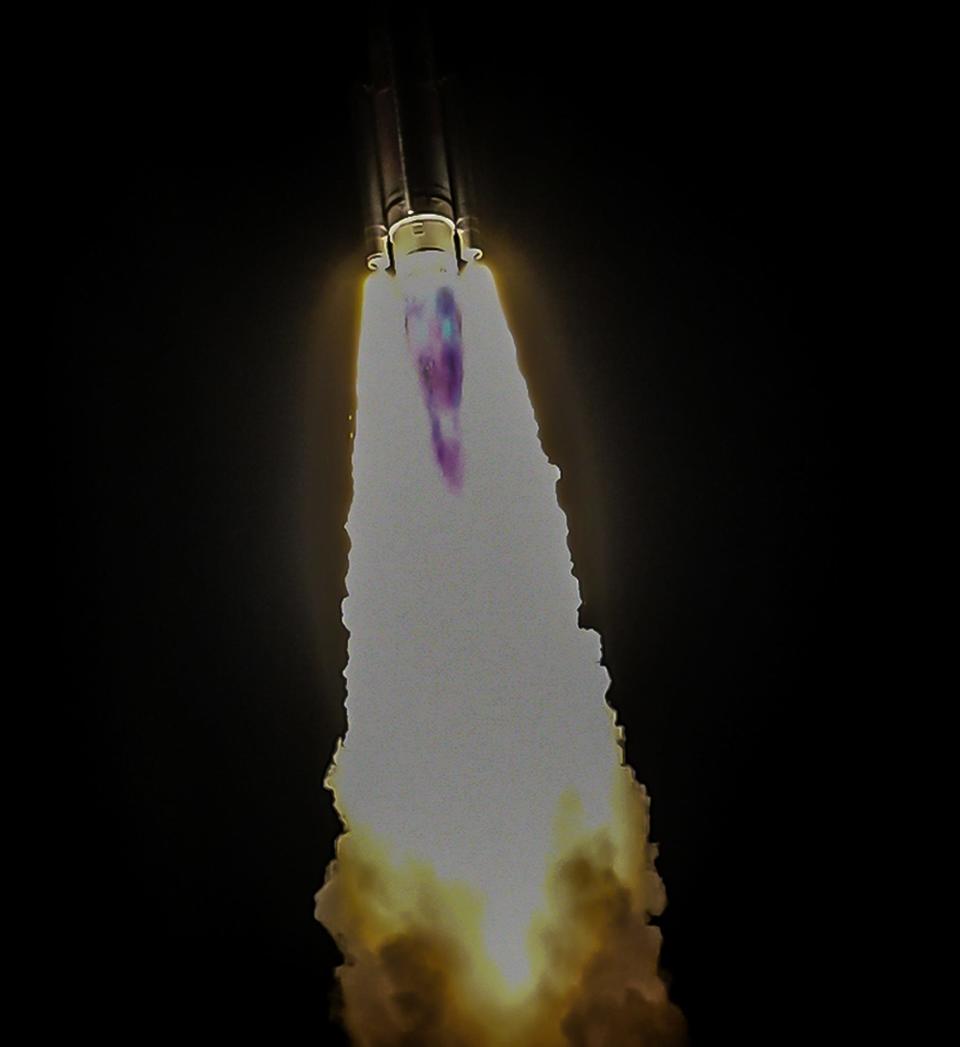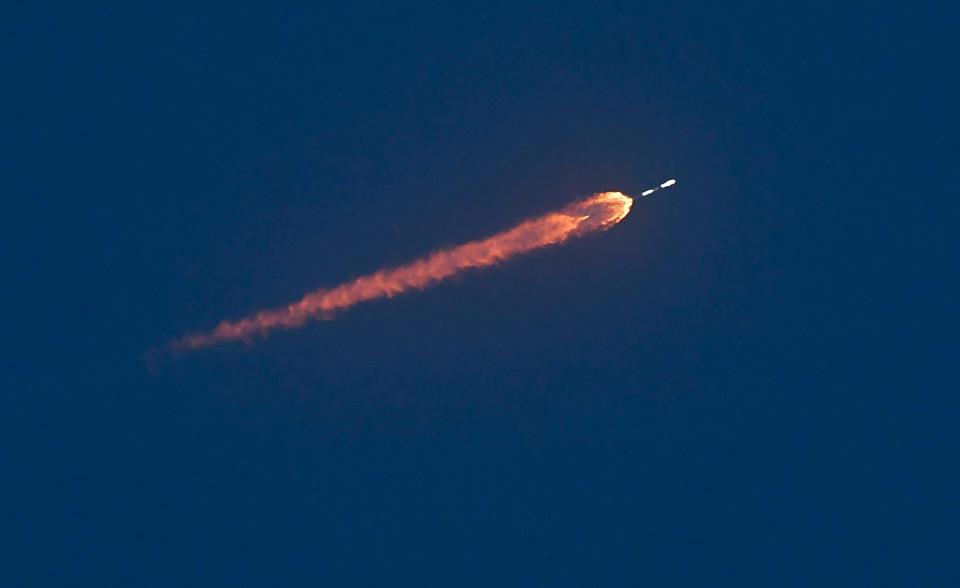ULA Vulcan rocket launches without delay on history-making maiden flight from Cape Canaveral
United Launch Alliance's new red-and-white Vulcan rocket lifted off in the early Monday morning darkness directly on time during its maiden flight from Cape Canaveral Space Force Station, propelling the Peregrine robotic lunar lander to a planned Feb. 23 moon landing.
However, by Monday afternoon, moon-lander developer Astrobotic reported that the Peregrine's propulsion system had suffered "a critical loss of propellant" — forcing engineers to assess which alternative mission goals may be feasible.
The Vulcan's inaugural Cert-1 mission headlined a back-to-back Space Coast launch doubleheader. SpaceX sent a Falcon 9 into low-Earth orbit at 5:35 p.m. EST Sunday from Launch Complex 40, and the rocket deployed another batch of 23 Starlink internet satellites into low-Earth orbit.
Eight hours and 43 minutes later, the ULA Vulcan took flight at 2:18 a.m. Monday from nearby Launch Complex 41.
"It was so exciting. I ran outside so I could watch this thing lift off. And that was so cool, after so many years of development, to watch this thing fly," Eric Monda, who works on ULA's mission design team, said 10½ minutes after liftoff on NASA TV."That was fantastic," Monda said.
The Vulcan's launch looked picture-perfect.
"Vulcan is very much based on our heritage rockets, the Delta IV and Atlas V vehicles. But we brought in a lot of new innovation and capabilities that are going to allow us to even better support our warfighters (and) exploration, as well as connecting the world," Amanda Bacchetti, ULA director of vehicle upgrades, said during the NASA TV broadcast.
Hours after launch Monday morning, Astrobotic reported that an anomaly with its Peregrine lunar lander had prevented the spacecraft from "achieving a stable sun-pointed orientation" after a successful stage separation.
Peregrine's propulsion-system problem was reported later. In an afternoon statement, Astrobotic said "the team is working to try to stabilize this loss, but given the situation, we have prioritized maximizing the science and data we can capture."
Vulcan's success is critical to ULA's trajectory — as SpaceX has ascended to dominate the Space Coast's unprecedentedly busy launch schedule. Mated with a Centaur V upper-stage booster, Vulcan is slated to replace ULA’s Atlas V rocket and soon-to-be-retired Delta IV Heavy rocket.
Congratulations! This is an outstanding accomplishment for the future of the space industry! 🚀 https://t.co/QKkRHj9OJW
— Space Florida (@SpaceFlorida) January 8, 2024
More: Viewer's guide: ULA's Vulcan rocket aims for historic maiden liftoff early Monday morning
Next, ULA officials are targeting April for Vulcan's second flight to earn certification to carry Space Force national security payloads. Afterward, Bacchetti said engineers will embark upon about two months' worth of data testing before earning certification. The company hopes its first Vulcan launch supporting national security happens this summer.
ULA has already sold more than 70 Vulcan launches to date, including 38 missions for Amazon’s Project Kuiper and multiple national security space launch missions — with hopes of ramping up a future biweekly launch rate, the company announced Monday.
“This is a groundbreaking day, culminating years of technical collaboration and partnership to field a new launch system for the United States. Congratulations to United Launch Alliance on a successful first Vulcan Centaur launch," Brig. Gen. Kristin Panzenhagen, who commands Space Launch Delta 45, said in a Monday press release.
"A strong, competitive launch market, servicing both government and commercial customers, supports continued innovation and our assured access to space,” Panzenhagen said.

Astrobotic's Peregrine four-legged lunar lander measures 6.2 feet tall and 8.2 feet wide. Propelled into position by the Vulcan's Centaur V upper stage, equipped with a top-mounted solar panel, Peregrine is scheduled to operate for about 10 days on the moon's surface with an array of scientific instrumentation.
"The United States hasn't soft-landed on the moon since NASA's Apollo program more than 50 years ago. And only a handful of countries have ever successfully landed on the lunar surface," Alivia Chapala, Astrobotic director of marketing and communication, said on NASA TV.
"Astrobotic's aim is to not only return the American flag to the moon again with Peregrine, but also to start regular commercial lunar deliveries to the moon's surface," Chapala said.
On the moon, NASA instruments aboard Peregrine are slated to study the lunar exosphere, thermal properties of the lunar regolith, hydrogen abundances in the soil at the landing site, and conduct radiation environment monitoring, the agency said in a Monday press release.

“The first (Commercial Lunar Payload Services) launch has sent payloads on their way to the Moon — a giant leap for humanity as we prepare to return to the lunar surface for the first time in over half a century,” NASA Administrator Bill Nelson said in the release.
“These high-risk missions will not only conduct new science at the Moon, but they are supporting a growing commercial space economy while showing the strength of American technology and innovation," Nelson said.
"We have so much science to learn through CLPS missions that will help us better understand the evolution of our solar system and shape the future of human exploration for the Artemis Generation," he said.

For the latest launch schedule updates from Cape Canaveral Space Force Station and NASA's Kennedy Space Center, visit floridatoday.com/launchschedule.
Rick Neale is a Space Reporter at FLORIDA TODAY (for more of his stories, click here.) Contact Neale at 321-242-3638 or rneale@floridatoday.com. Twitter/X: @RickNeale1

This article originally appeared on Florida Today: ULA Vulcan launches on historic flight from Cape, lunar lander anomaly

